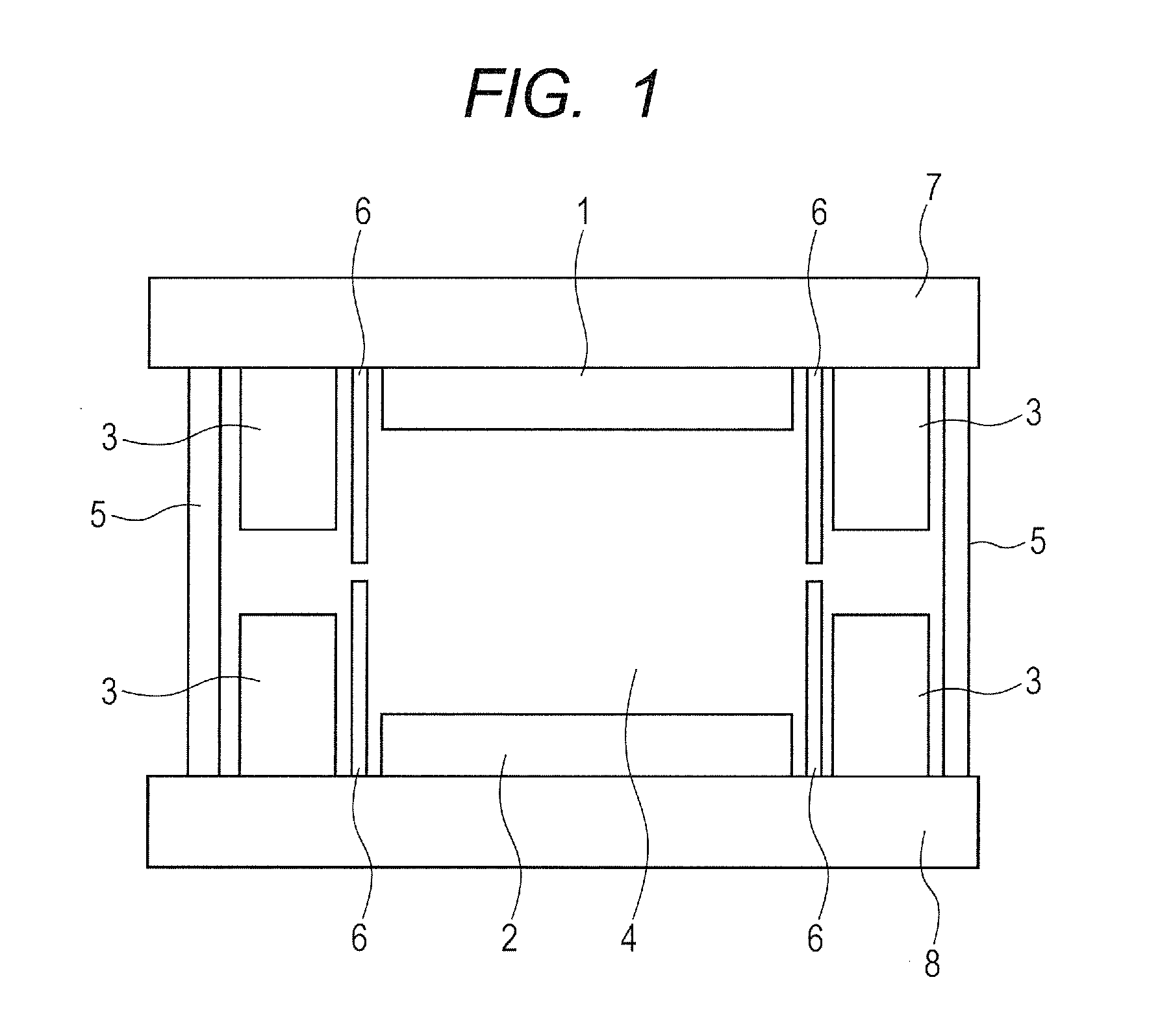Electrochromic element, method of driving the same, an optical filter, lens unit, image pick-up device and window material
a technology of electrochromic elements and optical filters, applied in non-linear optics, instruments, optics, etc., can solve the problems of increasing power consumption, insufficient decoloring due to charge imbalance, and reducing response speed, so as to reduce power consumption, reduce response speed, and eliminate insufficient decoloration
- Summary
- Abstract
- Description
- Claims
- Application Information
AI Technical Summary
Benefits of technology
Problems solved by technology
Method used
Image
Examples
synthesis example 1
Synthesis of Compound 1
[0123]A synthesis example of Compound 1 serving as the anodic EC material is described below.
[0124]In a 50-milliliter reaction vessel, 500 mg (1.67 mmol) of XX-1 (2,5-dibromoethylene dioxythiophene) and 1.05 g (5.0 mmol) of 2-isopropoxy-6-methoxyphenylboronic acid were mixed in a mixed solvent of toluene / tetrahydrofuran (10 ml / 5 ml), and nitrogen was used to remove dissolved oxygen.
[0125]Next, 19 mg (0.083 mmol) of Pd (OAc)2, 89 mg (0.22 mmol) of 2-dicyclohexylphosphino-2′,6′-dimethoxybiphenyl (S-Phos), and 1.92 g (8.35 mmol) of tripotassium phosphate were added thereto under a nitrogen atmosphere, and the reaction was performed for 7 hours while being heated to reflux at 110° C.
[0126]The reaction solution was cooled to room temperature, and then concentrated under reduced pressure, and separated and purified by silica gel chromatography (mobile phase: hexane / ethyl acetate=4 / 3) to provide Compound 1 as white solid powder (420 mg, yield: 54%).
[0127]Measurement ...
synthesis example 2
Synthesis of Compound 2
[0129]Compound 2 serving as the cathodic EC material was synthesized based on the document of Cinnsealach et al. (Solar Energy Materials and Solar Cells Vol. 57 (1999) 107-125).
synthesis example 3
Synthesis of Compound 3
[0130]Compound 3 serving as the anodic EC material was synthesized based on the document of Cummins et al. (Journal of Physical Chemistry B 104 (2000) 11449-11459).
PUM
| Property | Measurement | Unit |
|---|---|---|
| decoloring voltage | aaaaa | aaaaa |
| transmittance | aaaaa | aaaaa |
| transmittance | aaaaa | aaaaa |
Abstract
Description
Claims
Application Information
 Login to View More
Login to View More - R&D
- Intellectual Property
- Life Sciences
- Materials
- Tech Scout
- Unparalleled Data Quality
- Higher Quality Content
- 60% Fewer Hallucinations
Browse by: Latest US Patents, China's latest patents, Technical Efficacy Thesaurus, Application Domain, Technology Topic, Popular Technical Reports.
© 2025 PatSnap. All rights reserved.Legal|Privacy policy|Modern Slavery Act Transparency Statement|Sitemap|About US| Contact US: help@patsnap.com



